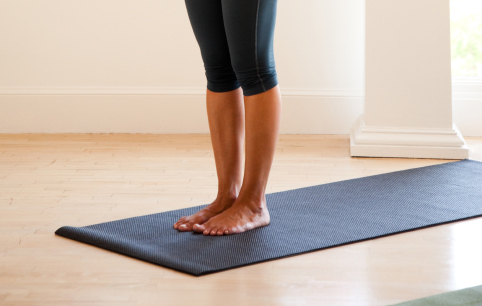 Examining the myths, alignment cues and benefits of Tadasana, as well as ways to deepen the pose (or not)
Examining the myths, alignment cues and benefits of Tadasana, as well as ways to deepen the pose (or not)
By Pam Udell
Tadasana (Mountain pose) is known as “standing on our own two feet.” It is the foundation for all other poses and for our posture. Let’s begin our ascent.
What is considered the right way to stand in Tadasana?
We hear conflicting cues in classes, and wonder which is right. In Tadasana, do we “touch the big toes together”? Or “have the feet apart”? Do we anchor down through the “four corners of our feet”? Or the “three corners”?
In my opinion, none is wrong. Teachers tend to base each cue on our experience and adapt as needed with something that feels as if it works similarly in our own body. Ask yourself, is the subtle change in cueing dangerous to the body? We are each built differently and have to honor that in our body. First, do no harm. Even though there is no one right way to do a pose, there are eight universal cues for proper alignment in Tadasana.
How Tadasana improves your health, Mountain pose teaches us good posture
Good posture facilitates full breath, which in turn improves circulation. As our tissues are fed oxygen, we become stronger and healthier in mind and body. Also, a posturally correct Tadasana lines up the bones of the upper legs (femurs) and the lower legs (tibiae), helping to keep the knees healthy. Aligning the natural curves of the spine minimizes pressure on our discs.
Anatomy of Mountain pose: Stand tall, stand proud, use comfortable breath
Maintain your natural curves. And you will begin to feel an inner strength and beauty — much like a mountain’s.
I hope you enjoyed base camp!























No Responses to “Standing on your own two feet: Asana and alignment in Mountain pose”